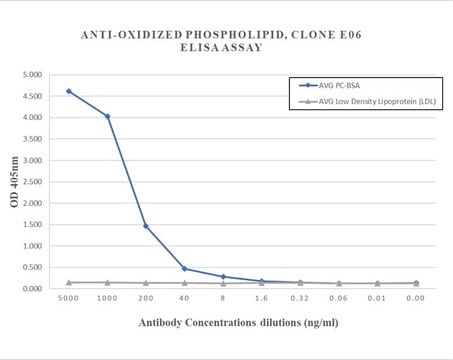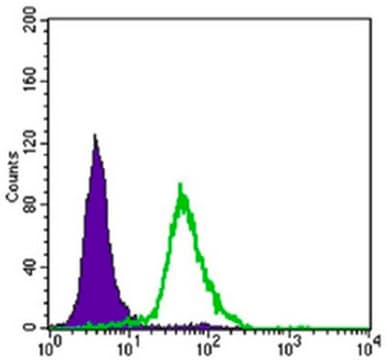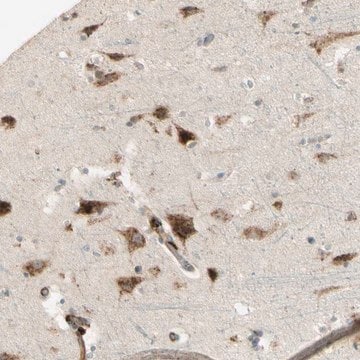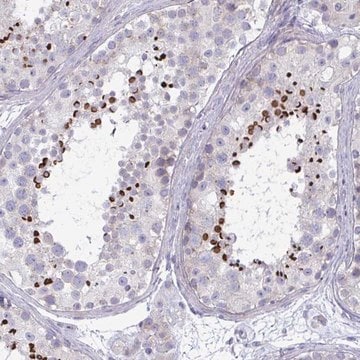330001S
Avanti
E06 mAb
E06 Mouse Monoclonal Antibody (IgM), Anti-(Oxidized Phospholipid), 1X PBS (Phosphate Buffered Saline) with 0.27 mM Na2 EDTA
Synonyme(s) :
E06 mAb, T15 antibody
About This Item
Produits recommandés
Forme d'anticorps
purified from hybridoma cell culture
Type de produit anticorps
primary antibodies
Essai
>95%
Forme
solution
Conditionnement
pkg of 1 × 0.1 mL (polypropylene tube with screw cap (330001S-100ug))
Fabricant/nom de marque
Avanti Research™ - A Croda Brand 330001S
Concentration
1 mg/mL (330001S-100ug)
Conditions d'expédition
dry ice
Température de stockage
−70°C
Description générale
Application
Conditionnement
Informations légales
Vous ne trouvez pas le bon produit ?
Essayez notre Outil de sélection de produits.
Code de la classe de stockage
12 - Non Combustible Liquids
Classe de danger pour l'eau (WGK)
nwg
Point d'éclair (°F)
Not applicable
Point d'éclair (°C)
Not applicable
Faites votre choix parmi les versions les plus récentes :
Certificats d'analyse (COA)
It looks like we've run into a problem, but you can still download Certificates of Analysis from our Documents section.
Si vous avez besoin d'assistance, veuillez contacter Service Clients
Déjà en possession de ce produit ?
Retrouvez la documentation relative aux produits que vous avez récemment achetés dans la Bibliothèque de documents.
Notre équipe de scientifiques dispose d'une expérience dans tous les secteurs de la recherche, notamment en sciences de la vie, science des matériaux, synthèse chimique, chromatographie, analyse et dans de nombreux autres domaines..
Contacter notre Service technique


![[1,1′-bis(diphénylphosphino)ferrocène]dichloropalladium(II)](/deepweb/assets/sigmaaldrich/product/structures/130/734/8846aa26-1858-458a-998d-8c306c13bf0f/640/8846aa26-1858-458a-998d-8c306c13bf0f.png)

![[Pd(OAc)2]3 reagent grade, 98%](/deepweb/assets/sigmaaldrich/product/structures/508/249/99a0ef2c-b77c-4d73-8ed9-0cca05b6b41f/640/99a0ef2c-b77c-4d73-8ed9-0cca05b6b41f.png)



